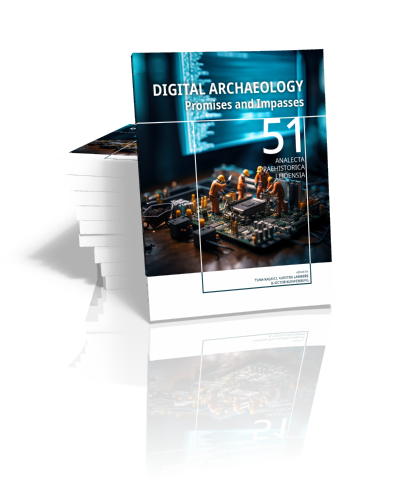Dr. Tuna Kalaycı

Tuna Kalaycı is an assistant professor of computational archaeology. His main quantitative interests are remote sensing, data analysis, and modelling. He also tackles questions of landscape archaeology and (ancient) cities. In particular, he focuses on productive landscapes, landscapes of movement, walking/walkability and neighbourhoods. His work also aims to positively challenge modern concepts, such as digitalisation, machine automation and smart cities. He is affiliated with the SAILS Initiative. He is a member of the Kerkenes Project, working on Iron Age urban dynamics.
Tuna holds degrees in Statistics (BSc), Settlement Archaeology (MSc), and Anthropology (PhD). His dissertation work at the University of Arkansas, Fayetteville, focused on the stability of urban systems during environmental crises. Next, he held a post-doctoral researcher position at the IMS-FORTH (Greece), specialising in remote sensing approaches to archaeology. Before joining Leiden University, he was a Marie Skłodowska-Curie Individual Fellow at the ISPC-CNR (Italy) and Durham University (UK). His “Modern Geospatial Technologies for Ancient Movement Praxis” project produced computational tools to understand Bronze Age traffic in Upper Mesopotamia.
Selected publications
- Katsianis M., Kalayci T. & Sarris A. (2022), Bridging digital approaches and legacy in archaeology, Digital 2(4): 538-545.
- Kalaycı T. & Wainwright. J. (2021), An abstract Agent-Based Model (ABM) for herd movement in the Khabur Basin, the Jazira. In: Recht L. & Tsouparopoulou C. (Eds.) Fierce lions, angry mice and fat-tailed sheep. Cambridge, UK: McDonald Institute for Archaeological Research.
- Atalan Çayırezmez N., Hacıgüzeller P. & Kalayci T. (2021), Archaeological digital archiving in Turkey, Internet Archaeology 58.
- Sarris A., Kalayci T., Papadopoulos N., Argyriou N., Donati J., Kakoulaki G., Manataki M., Papadakis M., Nikas N., Scotton P. & * Kissas K. (2020), Geophysical explorations of the classical coastal settlement of Lechaion, Peloponnese (Greece). Dabas M., * Campana S. & Sarris A. (Eds.), Mapping the Past From sampling sites and landscapes to exploring the ‘archaeological continuum’. UISPP 4 June 2018 – 9 June 2018 no. 8. Oxford: Archaeopress Archaeology. 43-52.
- Kalayci T. (2020), Processing and Analysing Satellite Data. In: Gillings M., Hacıgüzeller P. & Lock G. (Eds.), Archaeological Spatial Analysis: A Methodological Guide: Routledge.
- Seifried R. M. & Kalaycı T. (2019), An Exploratory Spatial Analysis of the Churches in the Southern Mani Peninsula, Greece, Open Archaeology 5: 519-539.
- Erb-Satullo N., Jachvliani D., Kalayci T., Puturidze M. & Simon K. (2019), Investigating the spatial organisation of Bronze and Iron Age fortress complexes in the South Caucasus, Antiquity 93(368): 412-431.
- Kalayci T., Lasaponara R., Wainwright J. & Masini N. (2019), Multispectral Contrast of Archaeological Features: A Quantitative Evaluation, Remote Sensing 11(8): 913.
- Kalayci T., Simon F-X. & Sarris A. (2017), A Manifold Approach for the Investigation of Early and Middle Neolithic Settlements in Thessaly, Greece, Geosciences 7(3): 79.
Books by Tuna Kalaycı
Digital Archaeology
Promises and Impasses
Edited by Tuna Kalaycı, Karsten Lambers & Victor Klinkenberg | 2023
Archaeology has gone digital for some time now! Topics such as GIS databases, 3D models, drone photography, meta- and para-data, semantic mapping, text mining, simulation, and social network analysis have become commonplace in archaeological discourse…






